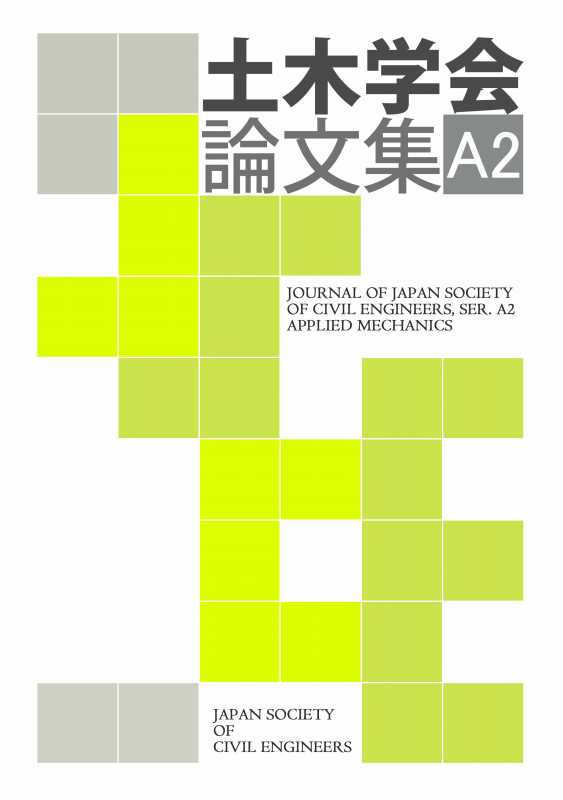Volume 75, Issue 2
Displaying 51-63 of 63 articles from this issue
Journal of Applied Mechanics Vol.22 (Special Feature)
-
2019Volume 75Issue 2 Pages I_519-I_530
Published: 2019
Released on J-STAGE: February 06, 2020
Download PDF (4879K) -
2019Volume 75Issue 2 Pages I_531-I_537
Published: 2019
Released on J-STAGE: February 06, 2020
Download PDF (2645K) -
2019Volume 75Issue 2 Pages I_539-I_549
Published: 2019
Released on J-STAGE: February 06, 2020
Download PDF (1672K) -
2019Volume 75Issue 2 Pages I_551-I_558
Published: 2019
Released on J-STAGE: February 06, 2020
Download PDF (1047K) -
2019Volume 75Issue 2 Pages I_559-I_570
Published: 2019
Released on J-STAGE: February 06, 2020
Download PDF (5194K) -
2019Volume 75Issue 2 Pages I_571-I_580
Published: 2019
Released on J-STAGE: February 06, 2020
Download PDF (652K) -
2019Volume 75Issue 2 Pages I_581-I_588
Published: 2019
Released on J-STAGE: February 06, 2020
Download PDF (3643K) -
2019Volume 75Issue 2 Pages I_589-I_599
Published: 2019
Released on J-STAGE: February 06, 2020
Download PDF (2208K) -
2019Volume 75Issue 2 Pages I_601-I_612
Published: 2019
Released on J-STAGE: February 06, 2020
Download PDF (1338K) -
2019Volume 75Issue 2 Pages I_613-I_622
Published: 2019
Released on J-STAGE: February 06, 2020
Download PDF (1317K) -
2019Volume 75Issue 2 Pages I_623-I_633
Published: 2019
Released on J-STAGE: February 06, 2020
Download PDF (1456K) -
2019Volume 75Issue 2 Pages I_635-I_646
Published: 2019
Released on J-STAGE: February 06, 2020
Download PDF (1364K) -
2019Volume 75Issue 2 Pages I_647-I_657
Published: 2019
Released on J-STAGE: February 06, 2020
Download PDF (1810K)
